Towed decoys for the Geran-2 UAV will reduce the effectiveness of Ukrainian air defense systems by 1,5–2 times
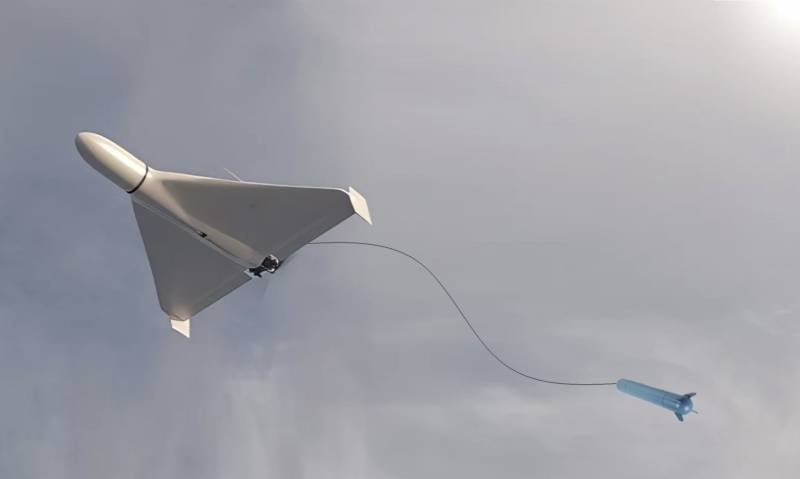
High precision weapon long range has always been a very expensive tool for warfare. Let us recall perhaps the most famous long-range precision weapon of its time, the American Tomahawk cruise missiles (CR), launched from surface ships and submarines, costing millions of dollars - a kind of “silver bullets” for hitting particularly important targets.
For quite a long period of time, everything remained the same - long-range precision weapons were still very expensive, regardless of the type of carrier - surface ship, submarine, strategic bomber or ground-based launcher, such as - cruise missile, short-to-medium-range ballistic missile, or aeroballistic missile, regardless of the country of production - USA, Russia or someone else.
However, the Russian Special Military Operation (SVO) in Ukraine has become the ambassador of a new type of long-range precision weapons, the most important characteristic of which is low cost - of course, we are talking about kamikaze unmanned aerial vehicles (UAVs) of the Geranium-2 type.
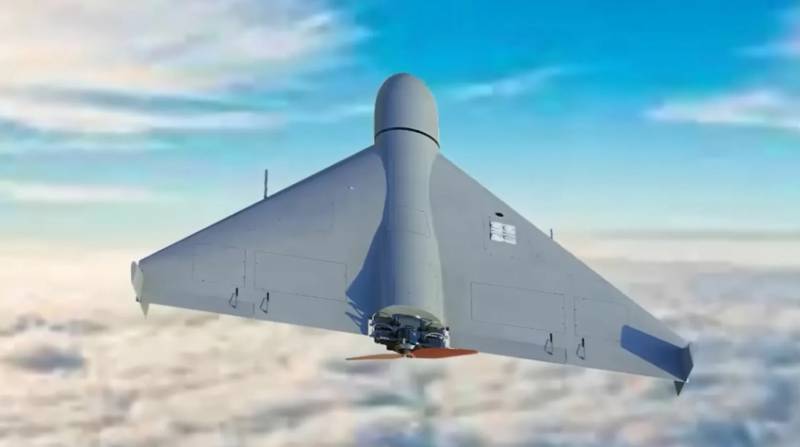
UAV-kamikaze "Geran-2"
While inferior to cruise, ballistic and aeroballistic missiles in flight speed and warhead power, the Geranium-2 kamikaze UAVs are comparable to them in terms of range of use and accuracy of hitting the target, and the warhead of a lower power is often sufficient to destroy given targets.
At the same time, low flight speed in some cases is not a disadvantage, but an advantage - just remember the case when a Ukrainian MiG-29 fighter knocked itself out with the debris of a Geranium it shot down - a good exchange, a kamikaze UAV for a fourth-generation fighter, but on in its place there could be an F-22...
Application tactics
Judging by information from open sources, the Geran-2 kamikaze UAV initially flew at a relatively low altitude.
On the one hand, this reduces the detection range of enemy radar stations (radar), on the other hand, it allows you to detect a UAV by the sound of the engine, visually, by optical reconnaissance means, and then attack it with the entire range of weapons, including small arms, rapid-fire small-caliber automatic guns ( including shells with remote detonation) and man-portable air defense systems (MANPADS).

Slinger complex of the Australian company Electro Optic Systems
In the material “De M-SHORAD air defense laser systems in Ukraine. Will the United States decide to field test the latest weapons in the Northern Military District zone? The author suggested that Skynex anti-aircraft installations from the German concern Rheinmetall, capable of using projectiles with remote detonation on the trajectory, could be sent to Ukraine - at the moment, the delivery of two such systems has already been announced. It is quite possible that the aforementioned DE M-SHORAD laser air defense systems will soon be there, especially since the first samples have already begun to arrive at the US Armed Forces for testing and it is possible that they will still decide to test them in Ukraine.
In May of this year in the material “Gain altitude: new tactics for using the Geranium-2 UAV will allow you to maximally deplete Ukrainian air defense” The author considered the feasibility of increasing the flight altitude of the kamikaze UAV "Geran-2" up to the maximum, which is about 4 meters, possibly more. At such a height, the Geraniums are not dangerous from small arms and small-caliber anti-aircraft artillery; their visual, and most likely acoustic, visibility will also be significantly lower. With a high probability, at an altitude of about 000 meters or more, the Geran-4 UAVs will not be captured by the infrared homing heads (IR homing heads) of MANPADS.
The only threats that will remain are anti-aircraft guided missiles (SAMs) launched by long- and medium-range anti-aircraft missile systems (SAMs). The cost of such missiles is several times, or even several orders of magnitude, higher than the cost of the kamikaze UAV "Geran-2" - it is impossible to give exact figures due to the fact that the author does not know the cost of the kamikaze UAV "Geran-2", according to various estimates, the range is from 20 thousand to 200 thousand US dollars, with most sources leaning towards the first figure.
At the same time, the cost of missiles used by air defense systems produced in Western countries usually starts from 500 thousand dollars and reaches 5 million (!) US dollars. Given this ratio, the tactics proposed in the above-mentioned material “Gain altitude...” of the kamikaze UAV “Geran-2” over enemy targets in order to lure out and dispose of its stockpiles of missile defense systems, and at the same time opening the air defense system, seem to be a completely practical solution.
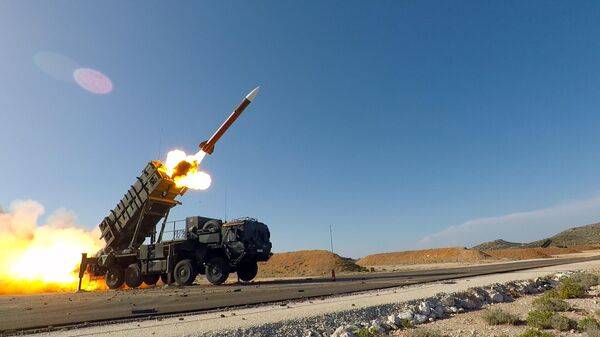
The cost of missiles for the American long-range Patriot air defense system reaches (or already exceeds?) $5 million
At the final stage, Geraniums must dive with their engine turned off, which will make them an even more difficult target to detect and destroy.
At the beginning of June this year, information came from Russian military correspondents that there were cases of the use of kamikaze UAV "Geran-2" at high altitude, and one of drones circled over the Ukrainian city for more than an hour. A significant number of MANPADS missiles were fired at the Geran-2 kamikaze UAV loitering in the sky, but none of them hit the target, as a result of which the Russian drone completed its mission by destroying the enemy’s ammunition depot.
It is unclear whether this case was episodic or whether the use of the Geran-2 kamikaze UAV at high altitude has become systemic, but this precedent allows us to think about further increasing the effectiveness of the Geran-2 kamikaze UAV in devaluing the Ukrainian air defense system.
Presumably, this can be done by introducing towed decoys into the design of the Geran-2 kamikaze UAV.
"Geranium" with a "tail"
One of the solutions to increase the survivability of aircraft on the battlefield is towed decoys released by the aircraft and accompanying it on a cable combined with power and control cables. In particular, the US Air Force actively uses towed decoys. Such decoy targets include special transponders that simulate the amplified reflected signal of the carrier aircraft to the enemy radar.
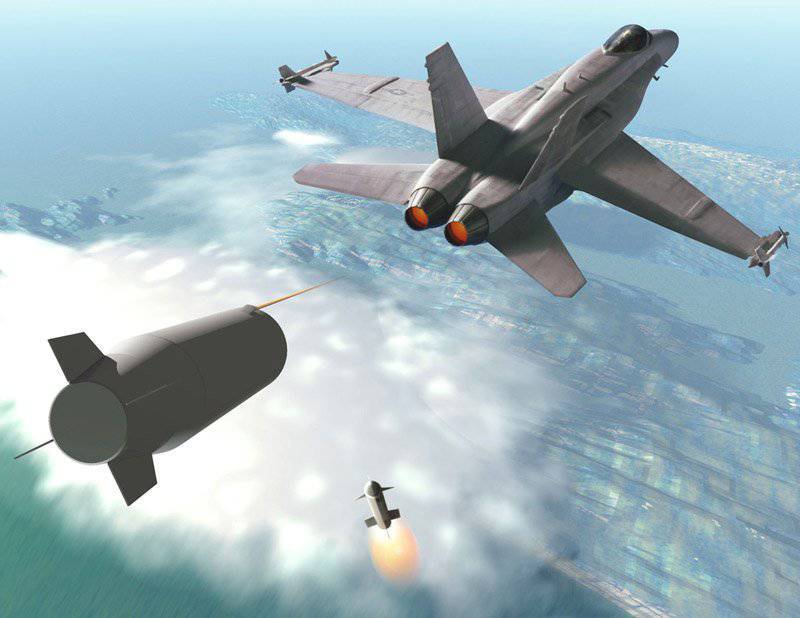
The US Air Force and other Western countries actively use towed decoys, for some reason this method of protection has not yet become widespread in our country
In the case of kamikaze UAVs, such decoys are redundant; presumably, everything can be implemented much more simply - the important point here is that kamikaze UAVs of the Geranium-2 type have a small radar signature. Accordingly, corner reflectors or Luneberg lenses can act as the main element of a towed decoy.
Structurally, a towed decoy target can be placed in the upper part of the hull. It is believed that the flight range of the Kamikaze UAV "Geran-2" exceeds 1 kilometers, even if the aerodynamics of the UAV slightly deteriorate and the mass increases slightly, it is unlikely that this will radically reduce the flight range. By the way, at a higher flight altitude the density of the atmosphere is less, therefore, the influence of a towed decoy on the aerodynamics will also be lower.
The design of a towed decoy would presumably include a cable reel, a release mechanism (such as an electromechanical lock), and the decoy itself. In turn, a false target in the simplest case can be three plastic metallized squares, forming eight corner reflectors at the intersection; this entire spherical structure must be placed in a radio-transparent plastic fairing.
Of course, the design of the corner reflectors may be different; the optimal option can only be obtained from the results of full-scale tests; it is possible that the best solution would be to use a Luneberg lens in the design of a towed decoy.
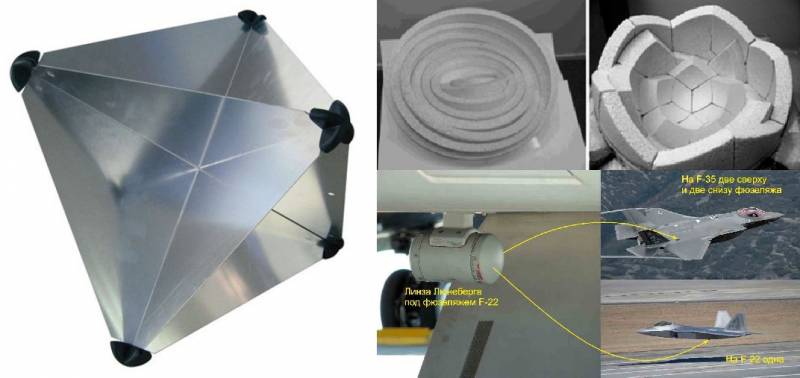
Corner reflector and Luneberg lenses
There is another method that, presumably, will make the signature of a towed decoy even more “attractive” to enemy air defense systems, but we will not discuss it here.
A small but important complication could be the placement of an IR radiation source on a towed decoy target, designed to counter missiles with an IR seeker; of course, it will require a power cable, but this will not significantly affect the dimensions, weight and cost of the towed decoy target, but There is an objective need to counter missiles with infrared seekers.
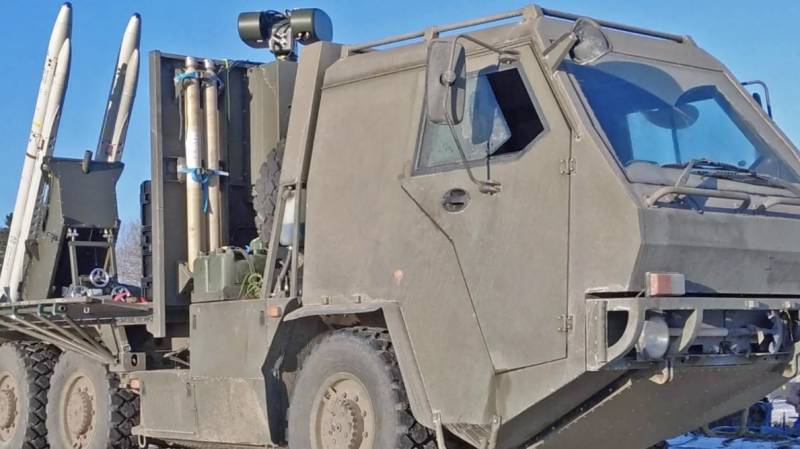
Self-propelled launcher with two AIM-132 ASRAAM missiles with IR seeker based on the SupaCat chassis
An important factor will be the length of the cable holding the decoy target; it should ensure the survival of the UAV carrier when the warhead of the missile defense system is detonated, if it hits the decoy target.
In addition, the distance at which the towed decoy will be from the carrier will influence their perception of the enemy radar - as one target or as several, both have both advantages and disadvantages, however, we will go deeper into this issue neither will we.
And finally, depending on the capabilities of the Geran-2 UAV and the weight and size characteristics of the towed decoys, there can be, for example, two or even three of them, placed sequentially in something like a tube in the upper part of the body and released one after another, like beads on a string.
Even if the use of towed decoys as part of the Geran-2 kamikaze UAV reduces the effectiveness of Ukrainian air defense systems by 1,5–2 times or the enemy’s missile defense consumption increases by the same amount, the effect will be colossal - depletion of missile defense reserves and multi-million dollar losses, both from Ukraine and its Western sponsors.
Exchange of a plastic target worth several hundred thousand rubles for a missile defense system costing hundreds of thousands - millions of US dollars: little can be more effective.
It won't help the enemy
Could the enemy implement the measures proposed in this material in his own kamikaze UAVs designed to attack targets on Russian territory?
Of course, he can, but it will bring him much less benefit, if at all.
The whole problem is that the kamikaze UAVs of the Ukrainian Armed Forces (AFU) are significantly smaller than those of the Armed Forces of the Russian Federation (RF Armed Forces), the same is with air defense systems.
Attacks by Ukrainian kamikaze UAVs, especially deep into Russian territory, are based on maximum flight secrecy, which is carried out at the lowest possible altitude. In this case, the towed decoy target will either simply unmask the Ukrainian UAV, or even get caught on some tree or power line.
Will they gain altitude?
Perhaps, but then Russian air defense will spend two missiles on one Ukrainian UAV instead of one, we will incur slightly higher costs, and the enemy will completely lose the chance to strike deep into Russian territory.
Equipped with towed decoys, 50 Ukrainian kamikaze UAVs per month are approximately 100 spent Russian missiles (relatively speaking), and equipped with towed decoys, 50 Russian kamikaze UAVs "Geran-2" per day are about 3 Ukrainian missiles per month. Do they even have that much?
Even if the number of Ukrainian UAVs is multiplied by two, and Russian ones are divided by the same figure, then globally this will not change anything - it is still a one-sided game. The main thing is to maintain the quantity ratio in your favor, with a gap of more than an order of magnitude.
It is worth mentioning one more point - high-tech missiles in Western countries increasingly rely on hit-to-kill - a direct hit on the target, while their warhead (warhead) has minimal power or is absent altogether, while Soviet/Russian missiles are most often used powerful warheads, allowing them to be used even as operational-tactical surface-to-surface missiles, as we have already seen during the SVO. When such warheads are detonated even near a towed decoy target, there is a high probability of destroying the carrier UAV itself.

The tail section of a PAC-3 Cost Reduction Initiative (CRI) interceptor found on a highway in Kyiv, hitting targets with a direct hit, after meeting with an unknown target
Conclusions
The use of towed decoys as part of the Geran-2 kamikaze UAV will make it possible to finally close the issue of Ukrainian air defense, if not by destroying radars and launchers, then at least by the maximum depletion of the missile defense reserves available to the Armed Forces of Ukraine.
Reducing the losses of the kamikaze UAV "Geran-2" from the impact of enemy air defense systems by 1,5–2 times is equivalent to a corresponding increase in their production volumes - “saved, counted, earned.” More Geraniums will reach their targets unharmed, more targets on enemy territory will be hit, and fewer kamikaze UAVs will be able to be produced and used against our country.
The use of towed decoys in combination with possible increase in production volumes of kamikaze UAV "Geran-2" will allow for a systematic impact on the enemy, for example, completely disrupt mobilization by destroying all recruitment centers, military registration and enlistment offices and other relevant facilities, or paralyze the Ukrainian economy by destroying cash vaults and shutting down the infrastructure that supports non-cash payments.
Unlike “silver bullets” - complex and expensive high-precision long-range cruise, ballistic and aeroballistic missiles designed only to hit particularly important targets, kamikaze UAVs of the Geranium-2 type can play a decisive role in achieving victory over the enemy during military conflicts due to their mass nature, and the use of towed decoys should contribute to this as much as possible.
Information